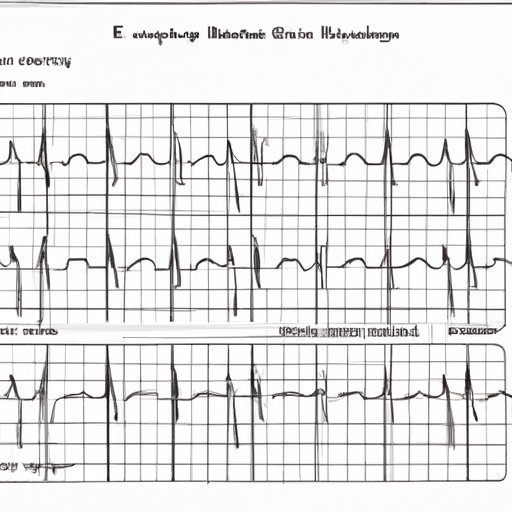
I. Introduction
If you are in the medical field or have a heart condition, you may have heard of an electrocardiogram (ECG). An ECG is a vital diagnostic tool used to detect heart problems and monitor the heart’s function. In this article, we will provide you with a step-by-step guide to reading an ECG and understanding the basics of electrocardiography. Our target audience is beginner level medical practitioners, those with an interest in medicine, or patients wanting to learn about ECG results.
II. Mastering ECG Reading: A Step-by-Step Guide for Beginners
For beginners, ECG reading may seem challenging, but it is an essential skill to master. Learning how to read an ECG is like learning a new language. It takes practice, and you must familiarize yourself with the fundamental concepts and norms. Here is a step-by-step guide to help in understanding the process:
- Step 1: Understand the Basic Principles of Electrocardiography
- Step 2: Locate the AV Node and Sinus Node
- Step 3: Analyze the P Wave
- Step 4: Assess the QRS Complex
- Step 5: Evaluate the T Wave
- Step 6: Interpret Heart Rate and Rhythm
This guide will show how to get an overview, interpret, and identify typical abnormalities from an ECG.
III. The Ultimate ECG Interpretation Guide: Tips and Tricks to Improve Your Skills
ECG interpretation goes beyond the basic principles of electrocardiography and requires years of training. Here, we will discuss some advanced tips and tricks that professionals use to improve their ECG interpretation skills. To interpret an ECG accurately, you must understand the different abnormalities and their significance.
Some tips on how to improve accuracy and speed when interpreting ECGs include:
- Know the patient’s history
- Check for artifacts
- Identify ischemia and infarction
- Examine the pattern of the waveform
- Understand axis deviation, bundle branch block, and ventricular hypertrophy
These tips will help improve your ECG interpretation skills, making you a more efficient and effective healthcare professional.
IV. Deciphering ECG Patterns: Understanding the Basics of Electrocardiography
ECG readings are a combination of different waveforms that represent the electrical activity of the heart. Understanding each component of the waveform is essential in identifying normal ECG patterns versus abnormal ones. Key elements include the P wave, PR interval, QRS complex, ST segment, and T wave. Here we will provide an overview of each component and how it relates to the heart’s mechanical and electrical activities.
V. How to Read Your Own ECG Results: A Comprehensive Guide for Patients
Doctors use ECGs to diagnose diseases affecting the heart and monitor existing conditions. As a patient, it’s crucial to understand your ECG results and the significance of any abnormalities shown. Reading your own ECG can be overwhelming, but it’s essential to take an active role in your health. In this guide, we will show patients how to read their ECG results and understand their significance.
Steps for reading your ECG include:
- Ensure the ECG was conducted correctly
- Assess the heart rate and rhythm
- Identify the P, QRS, and T waves on the graph
- Recognize any abnormalities
It’s important to note that reading your ECG does not replace seeking medical attention, and you should contact your healthcare provider if you notice any abnormalities in your results.
VI. From Beginner to Pro: A Roadmap for Learning How to Read ECGs
Becoming proficient in ECG reading takes time and patience, and there are several resources available to help you. If you’re a beginner looking to improve your skills, there are several options available. Here, we will provide you with a roadmap for learning how to read ECGs and provide some tips for continued improvement. Resources include:
- Online courses
- Textbooks
- Mobile applications
- Continuing education classes
By following this roadmap, you will have the necessary skills to read an ECG confidently and accurately.
VII. Conclusion
In conclusion, mastering the art of ECG reading takes time, but it’s a valuable skill for healthcare professionals and patients alike. This article provided a beginner’s guide to reading ECGs, tips and tricks on how to improve your skills, an overview of electrocardiography principles, and a roadmap for continued learning. Learning how to read ECGs can improve your diagnostic ability, patient care, and overall success as a healthcare professional.





